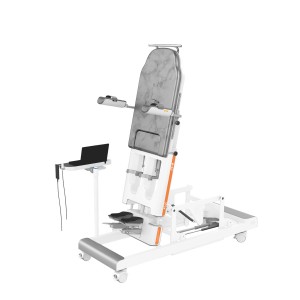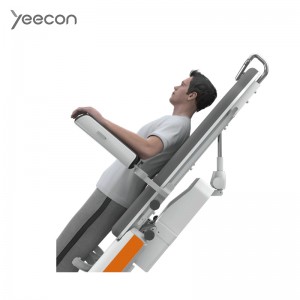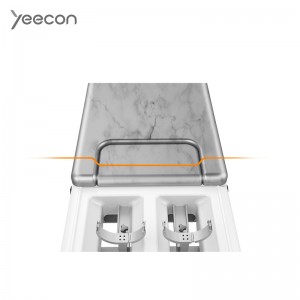If a loved one is seriously injured or very ill, they may have to spend a lot of time in bed. Long periods of inactivity, while beneficial for recovery, can become problematic if they place a constant strain on delicate skin.
Pressure ulcers, also known as bedsores or bed sores, can develop if preventive measures are not taken.Bed sores are caused by prolonged pressure on the skin. The pressure reduces blood flow to the area of the skin, leading to cell death (atrophy) and tissue destruction. Pressure ulcers most often occur on the skin that covers the bony parts of the body, such as the ankles, heels, buttocks, and tailbone.
Those who suffer the most are those whose physical conditions do not allow them to change position. This includes the elderly, people who have had a stroke, people with spinal cord injuries, and people who are paralyzed or physically handicapped. For these and other people, bedsores can occur both in a wheelchair and in bed.
Pressure ulcers can be divided into one of four stages based on their depth, severity, and physical characteristics. Progressive ulcers may present as deep tissue damage involving exposed muscle and bone.Once a pressure sore develops, it can be difficult to treat. Understanding the various stages can help determine the best course of action.
The American Pressure Ulcer Advisory Group classifies pressure ulcers into four stages, based on the degree of tissue damage or the depth of the ulcer. Organizational levels can be divided into:
I.
Stage I ulcers are characterized by redness on the surface of intact skin that does not turn white when pressed. The skin may be warm to the touch and appear firmer or softer than the surrounding skin. People with darker skin tones may experience noticeable discoloration.
Edema (tissue swelling) and induration (tissue hardening) may be signs of a stage 1 pressure sore. A first stage pressure ulcer may progress to a second stage if the pressure is not relieved.
With prompt diagnosis and treatment, first-stage pressure sores usually resolve within three to four days.
II.
A stage 2 ulcer is diagnosed when intact skin is suddenly torn open, exposing the epidermis and sometimes the dermis. The lesions are superficial and often resemble abrasions, burst blisters, or shallow pits in the skin. Stage 2 bedsores are usually red and warm to the touch. There may also be clear fluid in the damaged skin.
To prevent progression to the third stage, every effort must be made to close the ulcers and change position frequently.
With proper treatment, stage II bedsores can heal from four days to three weeks.
III.
Stage III ulcers are characterized by lesions that extend into the dermis and begin to involve the subcutaneous tissue (also known as the hypodermis). By this time, a small crater has formed in the lesion. Fat may start showing up in open sores, but not in muscles, tendons, or bones. In some cases, pus and an unpleasant odor may be visible.
This type of ulcer leaves the body vulnerable to infection, including signs of foul odor, pus, redness, and discolored discharge. This can lead to serious complications, including osteomyelitis (bone infection) and sepsis (caused by infection in the blood).
With aggressive and consistent treatment, a stage III pressure sore can resolve within one to four months, depending on its size and depth.
IV.
Stage IV pressure ulcers occur when the subcutaneous tissue and underlying fascia are damaged, exposing muscles and bones. This is the most serious type of pressure sore and the most difficult to treat, with a high risk of infection. Damage to deeper tissues, tendons, nerves, and joints may occur, often with profuse pus and discharge.
Stage IV pressure ulcers require aggressive treatment to avoid systemic infection and other potentially life-threatening complications. According to a 2014 study published in the journal Advances in Nursing, older adults with stage 4 pressure ulcers can have a mortality rate of up to 60 percent within a year.
Even with effective treatment in a nursing facility, stage 4 pressure ulcers can take two to six months (or longer) to heal.
 If the bedsore is deep and lodged in overlapping tissues, your healthcare provider may not be able to accurately determine its stage. This type of ulcer is considered non-staging and may require extensive debridement to remove necrotic tissue before a stage can be established.
If the bedsore is deep and lodged in overlapping tissues, your healthcare provider may not be able to accurately determine its stage. This type of ulcer is considered non-staging and may require extensive debridement to remove necrotic tissue before a stage can be established.
Some bedsores may appear to be stage 1 or 2 at first glance, but the underlying tissues may be more extensively damaged. In this case, the ulcer can be classified as a suspected deep tissue injury (SDTI) stage 1. On further examination, SDTI is sometimes found as stageIII or IV pressure ulcers.
If your loved one is hospitalized and immobile, you need to be vigilant to recognize and preferably prevent pressure sores. A healthcare professional or physical therapist may work with you and your care team to make sure the following precautions are followed:
Call your doctor if you notice pain, redness, fever, or any other skin changes that last more than a few days. The sooner pressure ulcers are treated, the better.
Ergonomic design to reduce pressure and avoid bedsores
- Bhattacharya S., Mishra R.K. Pressure sores: current understanding and updated treatments Indian J Plast Surg. 2015;48(1):4-16. Home office: 10-4103/0970-0358-155260
- Agrawal K, Chauhan N. Pressure ulcers: back to basics. Indian J Plast Surg. 2012;45(2):244-254. Home office: 10-4103/0970-0358-101287
- Wake up BT. Pressure ulcers: what clinicians need to know. Perm Journal 2010;14(2):56-60. doi: 10.7812/tpp/09-117
- Kruger E.A., Pires M., Ngann Y., Sterling M., Rubayi S. Comprehensive treatment of pressure ulcers in spinal cord injury: current concepts and future trends. J. Spinal medicine. 2013;36(6):572-585. doi: 10.1179/2045772313Y.0000000093
- Edsberg L.E., Black J.M., Goldberg M. et al. Revised National Pressure Ulcer Advisory Group pressure ulcer classification system. J Urinary Incontinence Stoma Post Injury Nurse. 2016;43(6):585-597. doi:10.1097/KRW.0000000000000281
- Boyko T.V., Longaker M.T., Yan G.P. Review of modern treatment of bedsores. Adv Wound Care (New Rochelle). 2018;7(2):57-67. doi: 10.1089/wound.2016.0697
- Palese A, Louise S, Ilenia P, et al. What is the healing time for stage II pressure sores? Results of the secondary analysis. Advanced wound care. 2015;28(2):69-75. doi: 10.1097/01.ASW.0000459964.49436.ce
- Porreka E.G., Giordano-Jablon G.M. Treatment of severe (stage III and IV) chronic pressure ulcers in paraplegics using pulsed radiofrequency energy. plastic surgery. 2008;8:e49.
- Andrianasolo J, Ferry T, Boucher F, et al. Pressure ulcer-associated pelvic osteomyelitis: evaluation of a two-stage surgical strategy (debridement, negative pressure therapy, and flap closure) for long-term antimicrobial therapy. Infectious diseases of the Navy. 2018;18(1):166. doi:10.1186/s12879-018-3076-y
- Brem H, Maggie J, Nirman D, et al. The high cost of stage IV pressure ulcers. I’m Jay Surg. 2010;200(4):473-477. doi: 10.1016/j.amjsurg.2009.12.021
- Gedamu H, Hailu M, Amano A. Prevalence and comorbidities of pressure ulcers among inpatients at Felegehivot Specialist Hospital in Bahir Dar, Ethiopia. Advances in nursing. 2014; 2014. doi: 10.1155/2014/767358
- Sunarti S. Successful treatment of non-staged pressure ulcers with advanced wound dressings. Indonesian medical journal. 2015;47(3):251-252.
Post time: Apr-28-2023






